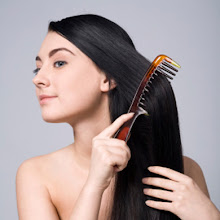What to Grow in Your Intensive Garden Early
Crops that are spaced 6" or less apart can be planted early without being damaged by frost and can be planted from seed include peas, radish, green onions, spinach, lettuce, Swiss chard, turnips, parsnips, beets and carrots, etc.
If you like radishes you do not need to devote rows to radishes alone, they grow fast, and the radish seed can be mixed with your green onion, carrot or beet seeds. This has a thinning effect on the plants that they are mixed with. Don't mix too much or you will have too many radishes.
Faster growing plants like spinach and turnips can be good space fillers. They can be planted in between longer growing plants and will harvest early to make room. I plant a lot of spinach as space fillers. It takes a lot of spinach to get a full pan after it cooks. The plants will harvest all at the same time, can be frozen easily, and will make good food storage.
Lettuce seeds can be mixed up with a number of different varieties earlier season leaf varieties, later season romaine varieties, and heading varieties. When planted in the same row, they will harvest at different times, and you will not have too much lettuce at one time.
lettuce, green onions, beets, carrots, Swiss chard, parsnips etc. Take longer to mature and in combination beds should remain on the outside rows, unless they are in beds that do not have larger long-season plants like tomatoes.
Lettuce and spinach will bolt to seed before they can mature, if you live in an arid climate you can't plant them too late, or you will lose the crop. I stop planting them May 15. The summer heat comes fast here in Utah. If your daytime temperatures stay less than 80 or 90 degrees you can get good crop when planting later.
Head lettuce can be difficult to grow in some areas. Lettuce grows in cool weather. I have better results here in Utah with leaf lettuces. In an arid climate chose heat-resistant varieties when purchasing seeds and plant as early as possible.
Other things to consider are that root crops like carrots, beets, radishes, turnips, parsnips etc. In heavy soils can be attacked by nematodes. In sandy soil they are not much of a problem. Turnips and parsnips are the most susceptible. Since turnips grow fast, you can plant turnips early as a trap crop, then pull them out and dispose of them.
Carrots grown in dense or rocky soil will not do well unless you chose a short variety like nates. In sandy soil the longer varieties like imperator will do well. If you have problems with carrots try experimenting with different varieties.
When planting peas follow the same time line as for lettuce and spinach. Peas will not do well in the heat, and are among the first crops that should be planted. Peas make good fillers on both sides of the center row when tomatoes will be planted in the center of a bed.
The tomatoes will be planted when the peas are small, a trellis for the tomatoes set in place, and the peas will climb the trellis. After the peas are harvested the vines are removed and the tomatoes take over the space. Plant bush peas for this application; tall peas are best planted along a fence line in 2' beds.
Some bush pea varieties like novelia were developed to have a lot of tendrils and do well when placed in double rows in the center of the beds. They climb on themselves, provide support, are short and stocky, and produce well. However if you are growing tomatoes in the center row they can be a problem.
Perfection or other bush varieties work much better in combination beds. They grow a little taller, are not as bushy, have fewer tendrils, are easier to harvest, and removing the vines will be easier.

0 comments:
Post a Comment